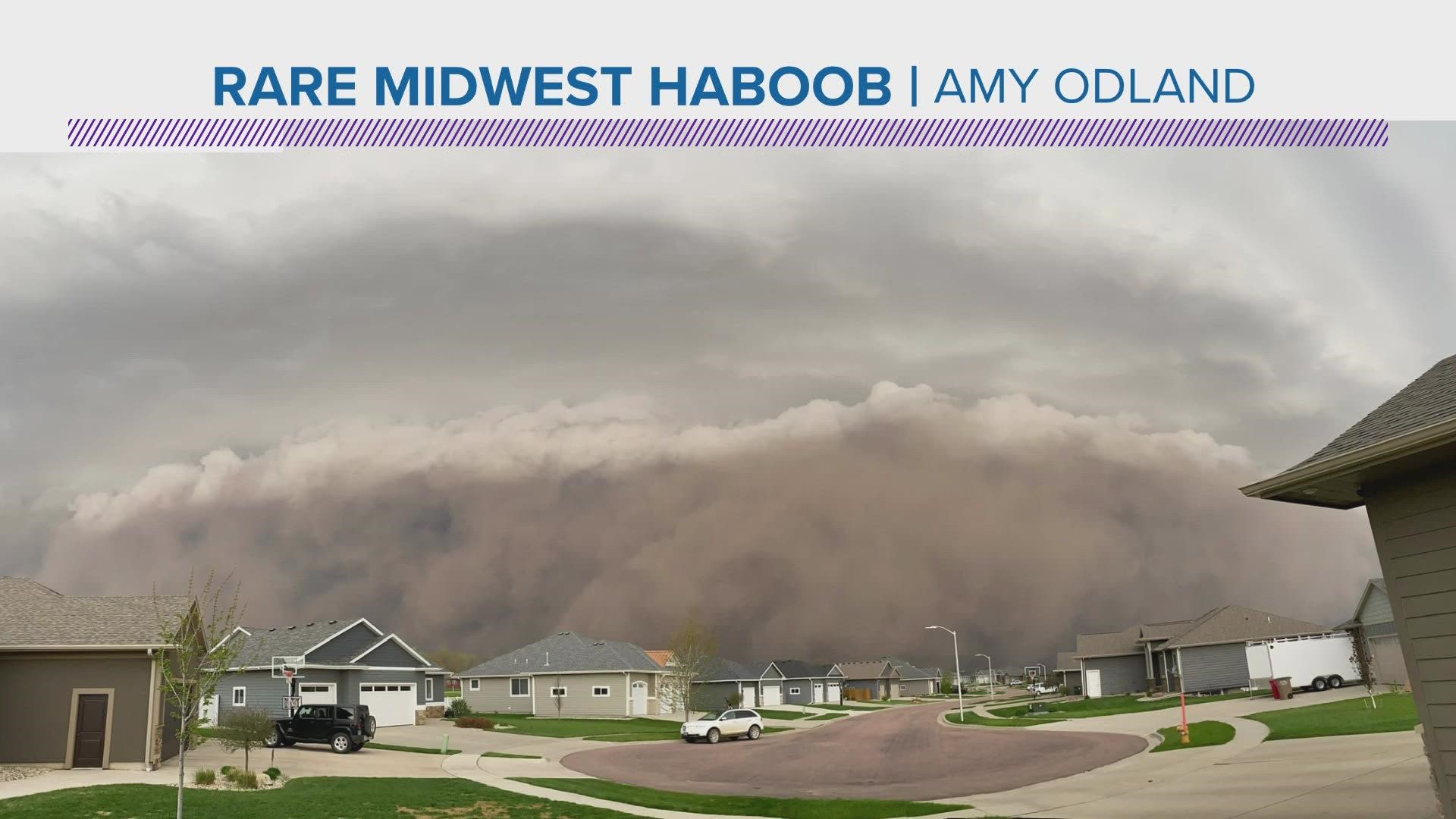DES MOINES, Iowa — Haboobs, more commonly called dust storms, happen frequently in the desert Southwest but are much rarer in the Midwest.
It's not totally impossible to see them form in the Midwest, though: a dust storm formed as a result of strong thunderstorm winds in parts of Iowa, South Dakota, and Nebraska on May 12, 2022.
According to the American Meteorological Society, a haboob is an intense wall of dust caused by strong winds lofting the dust as a high as 5,000 feet. This is followed by an increase in wind speed and low visibility.
The term haboob comes from the Arabic word habūb, which means strong wind.
Technically haboobs are slightly different than dust storms, which have a lower threshold for how high the dust must be lofted into the air, but the difference between the two is minor.
Haboobs regularly occur in states like Arizona or Nevada, but they are normally not as strong as the haboobs that develop in other parts of the world, like Africa or Asia.
In the case of the May 12 dust storm in the Midwest, a strong area of thunderstorms, later classified as a derecho, produced intense winds that pulled dust from the ground up into the air.
RELATED: Downbursts are different than tornadoes, but can produce straight-line winds just as powerful
Haboobs and dust storms often lead to hazardous driving conditions due to a rapid drop in visibility.
They can also cause significant problems for aircraft.
Perhaps least surprising, haboobs and dust storms typically cause breathing issues or health concerns as they lead to quick drops in local air quality.

